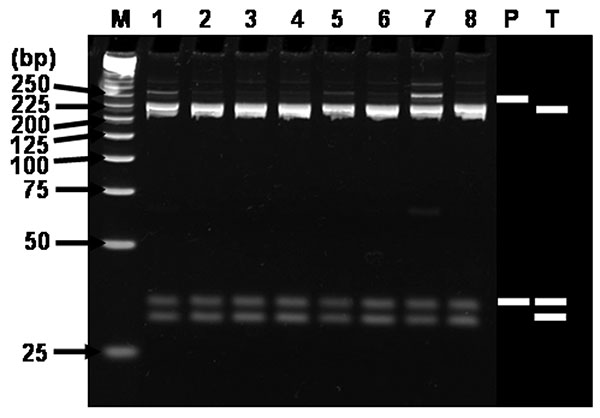Volume 11, Number 2—February 2005
Research
Spotted Fever Group and Typhus Group Rickettsioses in Humans, South Korea
Figure 3

Figure 3. Restriction fragment length polymorphism (RFLP) analysis of H2-products amplified with multiplex-nested primer set from seropositive sera. Ethidium bromide–stained polyacrylamide gels of AluI restriction endonuclease digestion of ≈230-bp rickettsial DNA amplified by using the nested primer H set WJ77/80 in the primary reactions and WJ79/83/78 in the nested reactions. Lanes: M, size marker DNA (25-bp DNA ladder); 1, H3-2; 2, H7-2; 3, H8-2; 4, H13-2; 5, H14-2; 6, H15-2; 7, H18-2; 8, H19; P, R. prowazekii; T, R. typhi. P and T; predicted fragments after digestion. The number on the left indicates the molecular size (in base pairs) of restriction fragments.
Page created: April 27, 2011
Page updated: April 27, 2011
Page reviewed: April 27, 2011
The conclusions, findings, and opinions expressed by authors contributing to this journal do not necessarily reflect the official position of the U.S. Department of Health and Human Services, the Public Health Service, the Centers for Disease Control and Prevention, or the authors' affiliated institutions. Use of trade names is for identification only and does not imply endorsement by any of the groups named above.